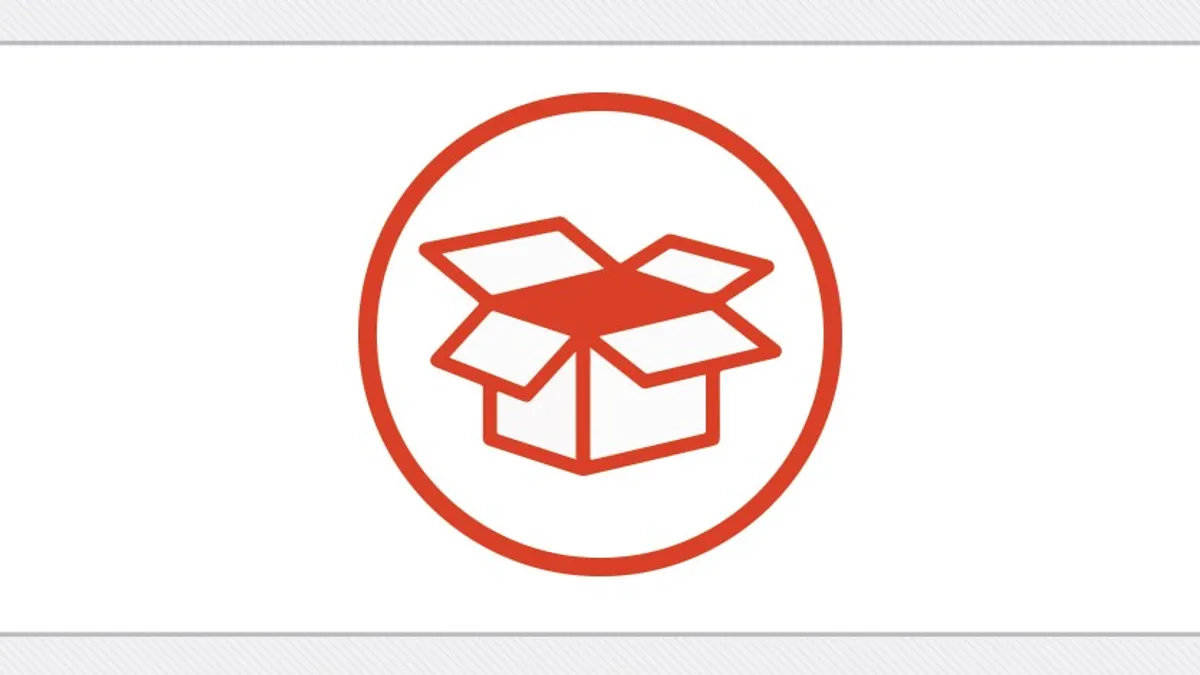Dive Brief:
-
Target on Tuesday announced that it’s expanding its Restock service to the Dallas-Fort Worth and Denver areas, saying in a company blog post that its pilot in the Minneapolis area is going well.
-
Restock users choose from more than 15,000 popular essentials and add them to a box holding up to 45 pounds — about the size of a shopping cart — and a “capacity tracker” shows how much room is left. Orders by 2:00 p.m. Monday through Friday are delivered the next day for $4.99.
-
The company on Tuesday also said that sales rose 1.6% to $16.4 billion, reflecting 1.3% same-store sales growth combined with the benefit from sales in non-mature stores. Second quarter adjusted earnings from continuing operations rose 0.1% to $1.23 per diluted share. E-commerce sales grew 32% and contributed 1.1 percentage points to the same-store sales increase, according to a company press release.
Dive Insight:
Target’s Restock effort comes amid a major revamp of stores and digital operations, and that complicates analysis of its quarterly reports. Still, there’s evidence that Target’s merchandising, brick-and-mortar and omnichannel initiatives are resonating with shoppers, and Restock is poised to further that.
"The competition between the major online retailers is only increasing, and with Target now offering this service to any Target consumer in the metro areas that Restock is offered (REDcard holder or not) and having a lower flat fee compared to Prime Pantry, this might entice Prime members to order their everyday items elsewhere," Maddison Tailor, director of marketing at marketing firm Ansira, told Retail Dive in an email.
Although Restock's delivery fee is competitive with Amazon's similar pantry service, it could be a deterrent, especially in light of Amazon's emerging Instant Pickup service, says Jim Fosina, CEO of Fosina Marketing Group. Worse, the retailer could be impeding impulse purchases in stores, he told Retail Dive in an email.
Still, the retailer in the second quarter demonstrated that it's making improvements without too much damage to its finances. Gordon Haskett analyst Chuck Grom upgraded Target's stock from Sell to Hold, and raised estimates and its price target, according to an email sent to Retail Dive.
“We continue to believe that evaluating Target’s quarterly performance via comparisons to prior years is difficult given the scope of its transition plan, and Q2 reinforces that view, with revenue and margin results not really telling the full story,” Moody’s Lead Retail Analyst Charlie O’Shea said in a note emailed to Retail Dive.
“In our view, better performance benchmarks remain cash flow from operations, which was impressive and fueled by continued working capital improvements and online sales growth, which is benefiting from Target’s increased spend, and both performed favorably during the quarter," O'Shea added.
Target’s improved numbers come after a long run of decline, GlobalData Retail Managing Director Neil Saunders noted in comments emailed to Retail Dive. “[G]reen shoots are finally showing at Target,” he said. “The overall sales rise is welcome, although not entirely unexpected given the company is now lapping very soft comparatives and has more stores than last year. However, the comparable uplift is much more significant and suggests that some of Target's initiatives are starting to pay dividends.”
Improvements to stores and new programs like the now-expanded Restock effort are noticeable and are paying off. “Their omni-channel strategy is on-point via online and mobile,” Jane Hali & Associates analysts said in an email to Retail Dive. “Consumers can also integrate their use of the mobile app along with their in-store experience.”
Target is also lowering prices, especially in consumables, and that’s boosted its private-label grocery sales, Saunders said. Its differentiation in apparel and home goods is even more impressive, but Target often fails to present them adequately in stores, according to Saunders. Jane Hali analysts called Target’s apparel offering “design-led and on-trend” and noted that “Target has a strong social media following and works with influencers. They have also added shoppable to their Instagram account,” which boasts 2.3 million followers.
Saunders also praised as "credible and compelling" exclusive new brands like Cat & Jack in kids clothing, Pillowfort in homewares and Cloud Island in baby. “Our only criticism is that Target does not always do a good job of showcasing these offers in store, although we accept this is something the group is in the process of remedying," he said.
The retailer’s e-commerce rise was welcomed by analysts but also hit the bottom line. Target’s Q2 gross margin rate was 30.5%, compared with 30.9% in the year-ago period, reflecting increased digital fulfillment costs and efforts to improve pricing and promotions. The more expensive operations in e-commerce and omnichannel are pinching and will present an ongoing challenge to the big-box retailer. The squeeze is “entirely necessary,” Saunders said, adding that the "acid test" will be whether Target's investments result in a sustained and significant upswing in sales.













